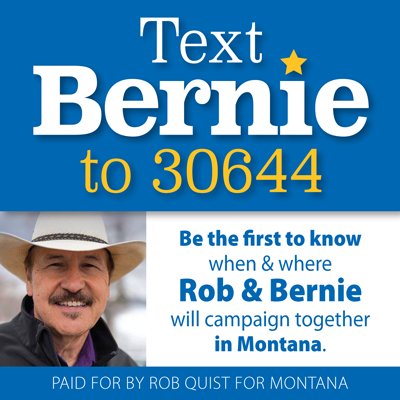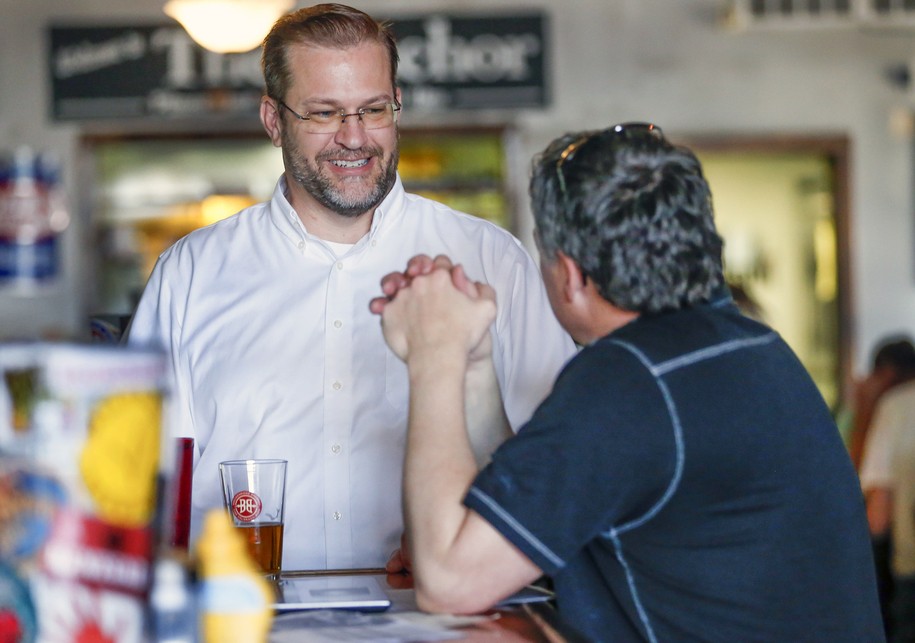Was KS-4 too red? Would it have been a waste of resources?
This is the most popular explanation for why the campaign received no help from the national party.
Here’s a look at the five special elections we have coming up. CA-34 isn’t that relevant since two Democrats made it into the run-off, pretty much what has happened in the last two cycles there.
Here’s a table with the Democrat’s margin in house races going back 12 years. -20% means the Democrat lost by 20 points. Positive values mean the Democrat won. We’ve lost both KS-4 and GA-6 for a dozen years. Keep in mind districts were redrawn for 2012 after the 2010 census.
| YEAR |
KS-4 |
GA-6 |
PA-10 |
SC-5 |
MT-AL |
| 2017 |
-6.8% |
Apr 18, Jun 20 |
TBD |
Jun 20 |
May 25 |
| 2016 |
-31% |
-23% |
-40% |
-21% |
-16% |
| 2014 |
-33% |
-22% |
-38% |
-31% |
-15% |
| 2012 |
-33% |
-29% |
-31% |
-11% |
-11% |
| 2010 |
-22% |
-99% |
-10% |
-10% |
-27% |
| 2008 |
-31% |
-37% |
7% |
25% |
-32% |
| 2006 |
-30% |
-45% |
6% |
14% |
-20% |
| 2004 |
-35% |
-100% |
-86% |
26% |
-32% |
Cells in bold are elections where the incumbent lost, or where no incumbent was running.
KS-4 is a red district, reddest of the bunch. But it’s not that much redder than GA-6.
And there was reason to hope, Estes was in Sam Brownback’s cabinet, and governor Brownback’s approval ratings were at 23%. Estes also ran a lackluster campaign. Thompson is a veteran and ran a campaign that fit his district (yes, he did have a campaign ad with him shooting a rifle at an outdoor target range).
Is a seat in the US House of Representatives worth enough that we’ll spend to turn out another 6,000 voters? We know the voters are there. 81,495 people voted for the Democratic candidate in the November election for the House seat. 55,310 turned up to vote in yesterday. If the DCCC had funded a poll, or helped with some outreach earlier (they eventually made 25,000 live calls a day before the election), could we have turned out 6,000 more voters? We’ll never really know.
Was it best to be in “stealth mode” in KS-4?
A lot of people said it didn’t make sense to “ nationalize” the election. The funny thing is, the Republicans weren’t scared to “nationalize” it. They sent in Ted Cruz, they made ad buys, they had Pence and Trump record robocalls. Volunteers (including me) doing GotV days prior to the election, would still run across Democrats who didn’t know there was an election on April 11. Would Democrats “nationalizing” the race have brought out a few more of them?
Anybody looking at this race should have known abortion related ads would be run against James Thompson (who is pro-choice). The NRCC ran ads claiming Thompson supported late-term abortions and abortions for gender selection. This is the district where George Tiller was assassinated. A new local blog actually wrote a piece about Thompson with this note:
Then too, for all those years that George Tiller was running the most prolific late term abortion mill in the western world right in Thompson’s backyard, one is hard pressed to recall a single Democrat anywhere registering an objection, let alone Paul [sic] Thompson.
Let’s just say a pro-choice stance is courageous.
Did the DCCC ignore Thompson because he’s a Bernie-crat?
Thompson, a civil rights attorney, said he was inspired by Sen. Bernie Sanders’ presidential campaign last year and decided to run for Congress. A group that formed following Sanders candidacy, Our Revolution, supported Thompson during the campaign through social media and recruited volunteers to make phone calls on his behalf. — NPR
For the record, I was one of those volunteers. I usually text, and I had over a thousand contacts for Thompson.
Thompson had beaten Dennis McKinney, who was the former minority leader in the Kansas House of Representatives. McKinney is anti-abortion, voted yes on the Kansas measure to define a fetus as a person, and was previously endorsed by Kansans for Life.
Many volunteers are left wondering whether the DCCC and national Democrats would have been in “stealth mode” if McKinney had won the primary. Check out the responses to this Chuck Schumer tweet.
I feel sorry for Chuck’s social media person.
Did independent progressive groups provide enough support?
There’s a messy argument on Twitter right now:
To which Our Revolution responded:
The fact is that DKos came very late to the Thompson party, about a week before the election. Why wasn’t the candidate “endorsed” well before-hand? The endorsement came only after news that national Republicans would be advertising for Estes while the Kansas Democratic party didn’t have $20k to spare for the candidate. There are a variety of reasons that is a variety of reasons. The fundraising campaign DKos ran split the donation between Thompson’s campaign and Daily Kos. There was a technical glitch with this that prevented some people from donating for hours.
What can we learn?
This entire saga raises a couple of questions.
- Does winning an open Democratic primary mean something?
- If it does, shouldn’t they commit a certain level of support for any candidate running on the party’s House/Senate ticket?
- If the impression among grassroots volunteers is that the party establishment picks favorites among Democratic candidates, what do we think the end result is going to be? Disillusionment or further engagement?
Dave Weigel has a piece up at WaPo: Four big lessons from Kansas’s special election
- The GOP machine is battered but efficient
- Democrats can’t get cute about campaign spending. People notice.
- In rural America, Democrats still have a brand problem
- Social issues still matter
It’s worth a read.
What do we do now?
This is all very interesting, but for me, there’s really only one question. What are we going to do for Rob Quist in Montana? He’s pro-choice, supports public schools, renewable energy and Native American rights (Montana has a large population). He’s a progressive Democrat endorsed by Our Revolution. How can we help him?
I know I’ll be volunteering for his campaign. I “adopted” Montana several cycles ago and have contributed to and volunteered for campaigns there since 2004. It’s more interesting than the sometimes somnolent NY politics. Those of you who live in “safe” districts/states may want to consider doing the same. I’ve been talking to voters in Montana for a dozen years. It is a great experience.
I would encourage to give time and if possible, donate to Rob Quist’s campaign.
— Cross-posted to DailyKos | @subirgrewal


 James Thompson lost last night. I want to discuss why national Democrats (DCCC, DNC, Senators, etc) were conspicuously absent from the KS-4 race. I think these are worth discussing, since the same questions will come up in the other races. Particularly MT-AL, where Rob Quist is running.
James Thompson lost last night. I want to discuss why national Democrats (DCCC, DNC, Senators, etc) were conspicuously absent from the KS-4 race. I think these are worth discussing, since the same questions will come up in the other races. Particularly MT-AL, where Rob Quist is running.